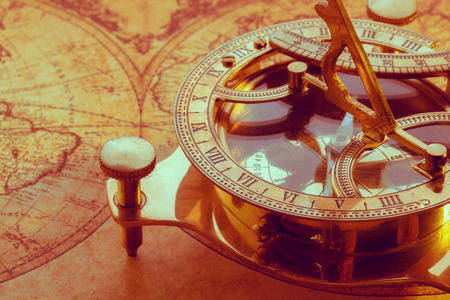Introduction: The Curious Place of Astrology in Modern Britain
Astrology has always held a peculiar position in British society—a blend of scepticism, fascination, and occasionally, quiet reverence. In today’s Britain, horoscopes are as likely to appear in the Metro as they are to be dismissed in a university common room debate. Despite its ancient origins and periodic waves of popularity, astrology remains a cultural undercurrent that resurfaces in surprising places, including educational settings. From the casual sharing of sun signs at school to more formal discussions about astrology’s historical impact within university lecture halls, its presence is both persistent and evolving. To set the scene for this exploration, it’s worth acknowledging how astrology’s reputation has shifted over centuries—from royal courts consulting astrologers to modern Britons scrolling zodiac memes on their phones. This blend of historic roots and contemporary relevance makes astrology a fascinating lens through which to examine beliefs, identity, and critical thinking in British education today.
Astrology on Campus: Academic Debates and University Societies
Astrology’s footprint within British higher education is more nuanced than many might assume. While rarely part of official curricula, astrology frequently becomes a point of discussion in university settings. Student debates, informal gatherings, and even dedicated societies have emerged across various campuses, reflecting both curiosity and scepticism towards this ancient practice. The culture of open debate at British universities means astrology is often scrutinised through critical lenses—philosophical, scientific, and cultural. Academic staff tend to approach the subject with caution, generally categorising it as pseudoscience, but student-led initiatives ensure it remains a lively topic for discussion.
Astrological Societies: A Cross-University Snapshot
Several universities in the UK have seen the establishment of astrology societies, often student-run and supported by student union frameworks. These groups provide a platform for enthusiasts to exchange natal chart readings, host workshops, or discuss historical perspectives on astrology. Membership numbers fluctuate, but their presence highlights a continuing interest among undergraduates and postgraduates alike.
| University | Society Name | Main Activities |
|---|---|---|
| University of Oxford | Oxford Astrology Society | Debates, guest speakers, chart readings |
| University of Edinburgh | Edinburgh Celestial Club | Workshops, social events, mythological studies |
| University of Manchester | Manchester Zodiac Circle | Lunchtime talks, newsletter, horoscope analysis |
Academic Attitudes: Scepticism Meets Curiosity
The prevailing academic stance in British universities is one of scepticism towards astrology. Faculties in science and philosophy departments often use astrology as a case study when teaching about critical thinking and the demarcation problem (distinguishing science from pseudoscience). However, sociology and history faculties occasionally explore astrology’s cultural significance or its historical role in shaping European thought. This tension between dismissal and curiosity ensures that astrology retains a marginal yet persistent visibility within campus life.
The Ongoing Debate: Astrology as Culture vs Science
A persistent theme within university debates is whether astrology should be considered purely as a cultural artefact or if there are aspects worthy of deeper academic inquiry. Forums hosted by student unions or inter-society panels commonly feature discussions on astrology’s psychological appeal and its influence on identity formation among young adults in Britain. In summary, while astrology does not enjoy formal academic endorsement in British universities, it thrives as a subject of debate—fuelled by student initiative and an enduring fascination with the stars.
![]()
3. Astrological References in the Curriculum and Popular Culture
In the context of British education, astrology often finds its way into both formal and informal settings, shaping perceptions in subtle but noteworthy ways. While mainstream curricula rarely dedicate time to serious astrological study, references to zodiac signs and horoscopes surface frequently within literature, media studies, and everyday classroom banter. For instance, classic English literature sometimes uses planetary or star sign symbolism to deepen character analysis—a technique that teachers may highlight when exploring Shakespeare or the Brontë sisters. Meanwhile, popular culture’s fascination with astrology is reflected in the casual discussions that occur among students, whether it’s reading out horoscopes during lunch breaks or joking about Mercury being in retrograde before exams.
In English classrooms, students might encounter astrological allusions as part of exploring character motivations or thematic elements. Teachers occasionally use these references as a springboard for broader discussions about belief systems and critical thinking. Media studies classes provide another touchpoint; students analyse how magazines, social media influencers, and television programmes popularise sun sign personality traits—sometimes reinforcing stereotypes in the process.
It’s worth noting that while British schools generally maintain a secular stance, astrology remains present through cultural osmosis. School newsletters or end-of-year publications may include lighthearted horoscope sections, reflecting a wider national tendency towards gentle scepticism mixed with entertainment value. This blend of casual engagement and academic curiosity typifies the British approach: astrology is not so much a subject to be taught rigorously as it is a cultural motif to be recognised, questioned, and occasionally enjoyed.
4. Schoolyard Horoscopes: Nostalgia, Fun, and Peer Influence
Astrology in British schools rarely forms part of the formal curriculum, yet it finds a lively home in the social fabric of playgrounds, corridors, and common rooms. Many pupils’ first encounter with astrology is through the light-hearted horoscopes printed in teen magazines such as Shout or Top of the Pops. These snippets—often humorous and optimistic—spark conversations about “star sign compatibility” or “lucky days,” providing a shared language for friendship groups.
Astrology as Social Currency
Within school settings, horoscopes often act as a form of social currency. Pupils trade stories about their supposed traits—“Leos are confident; Pisces are sensitive”—and use astrological signs to break the ice, form new friendships, or even gently tease each other. These interactions rarely delve into serious belief but rather reflect a blend of nostalgia and fun. Older students may look back with fondness at their first brushes with horoscopes, recalling how these playful predictions shaped lunchtime chats or influenced who sat together in the canteen.
The Spread of Horoscope Trends
Trends related to astrology ebb and flow across year groups. At times, certain magazines or social media accounts become popular sources for daily or weekly horoscopes. This leads to waves of interest, where pupils compare notes on their signs and discuss recent predictions. The table below illustrates typical ways astrology features in British school life:
| Astrology Feature | Where Encountered | Typical Pupil Reaction |
|---|---|---|
| Magazine Horoscopes | Teen mags (Mizz, Sugar) | Cautious amusement; sharing for laughs |
| Zodiac-Themed Stationery | School shops, book fairs | Personalisation; swapping items by sign |
| Star Sign Memes/Quizzes | Social media (Instagram, TikTok) | Viral trends; group participation |
Pupil Perspectives: Between Scepticism and Playfulness
While most British pupils approach astrology with scepticism, some find comfort or a sense of identity in their star sign’s characteristics. Teachers generally tolerate these interests as long as they remain harmless fun. In rare cases, however, peer influence can foster exclusionary behaviour—for instance, jokingly blaming star signs for falling out or forming exclusive groups based on astrological “compatibility.” Overall, astrology’s presence in schools is less about belief and more about bonding—a nostalgic reminder that even the stars can bring classmates together.
5. Skepticism vs. Belief: Attitudes of Educators and Students
Within British education, astrology often occupies a curious space between fascination and ridicule. Educators, especially in secondary schools and universities, tend to approach the topic with a healthy dose of scepticism. For many teachers, astrology is an opportunity to encourage critical thinking—using horoscopes as a light-hearted entry point for discussions on scientific reasoning, evidence, and pseudoscience. It’s not uncommon for teachers to reference astrological claims during lessons about probability or psychology, inviting students to question their validity and explore why such beliefs persist.
Amongst students, attitudes towards astrology are more varied. While some treat horoscopes as harmless fun—a talking point over lunch or a source of banter in group chats—others display genuine curiosity about their star signs. This duality is often reflected in schoolyard conversations: one moment dismissing astrology as “nonsense,” the next eagerly comparing birth charts and laughing over supposed personality traits. British humour plays a significant role here; self-deprecating jokes about being a “typical Gemini” or blaming Mercury retrograde for exam mishaps are commonplace.
Interestingly, university debates around astrology sometimes take on a more serious tone. Student societies might host talks or debates, examining whether astrology should be considered cultural heritage or outright pseudoscience. These forums encourage students to weigh up the social appeal of astrology against the expectations of academic rigour. The result is an environment where intrigue and open-mindedness can coexist with robust scepticism—a dynamic reflective of broader British values around debate and intellectual curiosity.
For educators, striking the balance between respecting personal beliefs and promoting scientific literacy can be delicate. Most opt for an inclusive approach, using astrology’s popularity as a springboard to teach analytical skills rather than issuing outright dismissal. Meanwhile, students themselves often demonstrate a sophisticated awareness of the blurred lines between entertainment and belief—playfully engaging with horoscopes while recognising their limitations.
In sum, British attitudes towards astrology in educational settings reveal a distinctive mix of wit, open inquiry, and critical reflection. Whether approached as a cultural phenomenon or a subject for debunking, astrology continues to spark dialogue in classrooms and common rooms alike—inviting both laughter and learning.
6. Conclusion: Astrology’s Academic and Social Footprint in Britain
Reflecting on astrology’s enduring fascination within British education and culture, it is clear that its presence extends well beyond the classroom or casual schoolyard conversation. While formal academic circles may often approach astrology with scepticism, its persistent appearance in student societies, debates, and even light-hearted horoscopes in school newspapers highlights a uniquely British balancing act—one that values both rational inquiry and cultural tradition. This interplay has ensured astrology’s continued relevance; it adapts to modern sensibilities while still offering a sense of shared heritage and playful curiosity. As Britain looks ahead, the question is not whether astrology will fade from educational settings, but rather how it will evolve alongside shifting attitudes towards belief, critical thinking, and identity. Whether as a tool for self-reflection, an ice-breaker among pupils, or a point of academic debate, astrology remains woven into the social fabric of British learning environments. Its future significance may well lie in its ability to provoke discussion—inviting students and educators alike to consider where reason ends and wonder begins.

